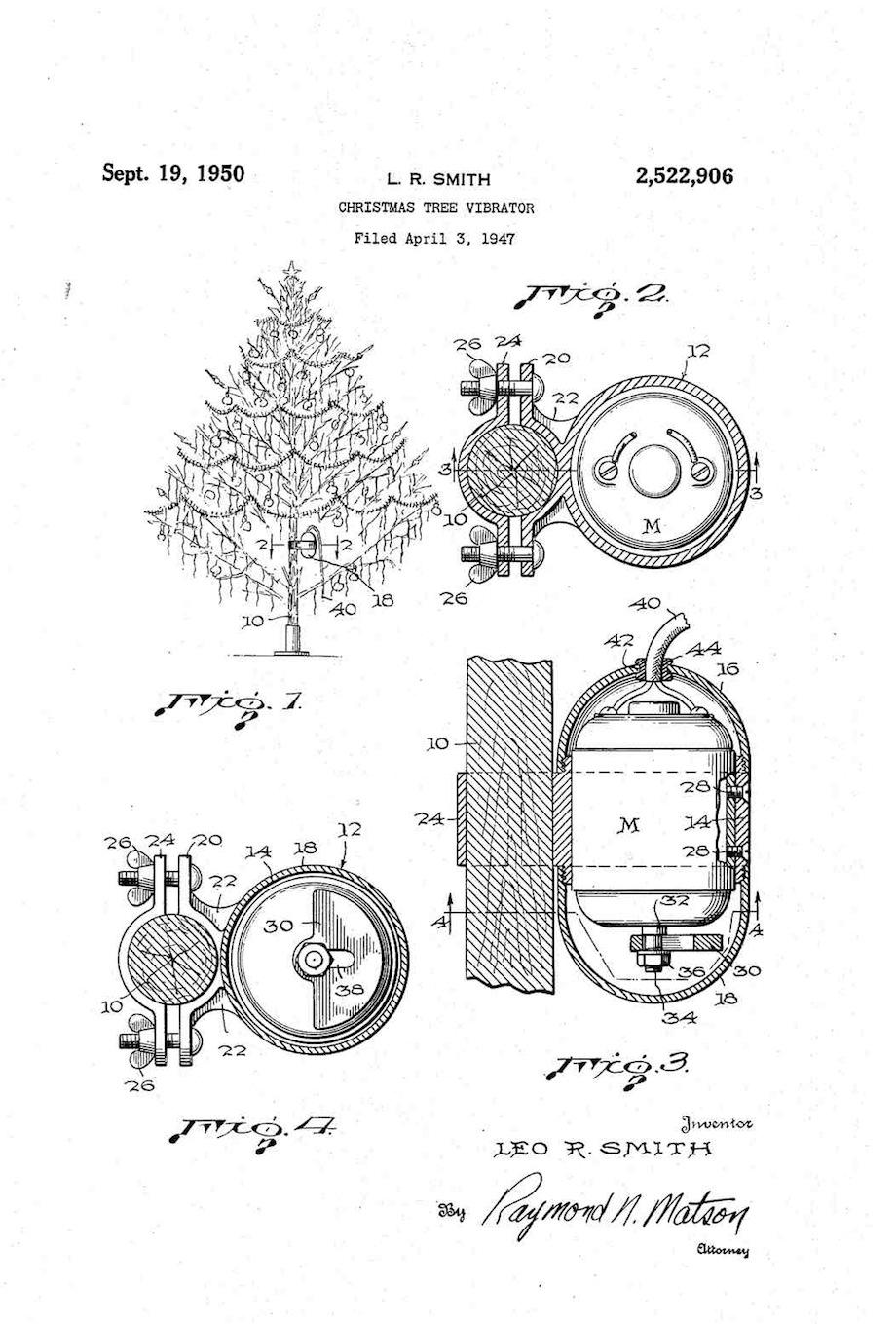The Vault is Slate’s new history blog. Like us on Facebook; follow us on Twitter @slatevault; find us on Tumblr. Find out more about what this space is all about here.
This 1947 patent for a “Christmas Tree Vibrator” turns out to be more confusing than risqué.
The inventor, Leo R. Smith, argued that a vibrating tree was a way to make ornaments look prettier. The vibratory unit “for attachment to decorated trees” would “transmit a highly pleasing two-dimensional vibration thereto without interference with the decorations.”
Smith thought that Christmas trees, already beautiful, could please both ear and eye if they vibrated. “Normally shining light-weight Christmas decorations, such as tinsel, spun-glass, tin-foil strips, mica particles, ornaments, etc.” would “sparkle profusely.” Meanwhile, decorations would emit a “pleasant rustling sound,” “similar to the sound of sleet falling upon packed snow.”
Although Smith’s idea might seem like an eccentric one, it must have sold at least a few units, as John W. Greer filed an updated patent for an Electronically Powered Apparatus for Imparting Vibratory Forces on a Tree in 1983. Greer observed that electrically-powered tree vibrators like Smith’s had a drawback: “it requires the use of household current, which could produce an electrical shock or a fire-igniting spark if a defect exists in the motor or electric cord.” Greer proposed to manufacture a unit with a battery-powered motor, to eliminate this hazard.
The invention, Greer argued, could save the homeowner not only worry but money. A vibrating tree could “cause the tinsel and ornaments on the tree to reflect the room or natural light, thus eliminating the need for Christmas tree lights.”
If anyone has seen one of these units in action, please comment!
Thanks to Penne L. Restad, author of Christmas in America: A History, for the tip.
